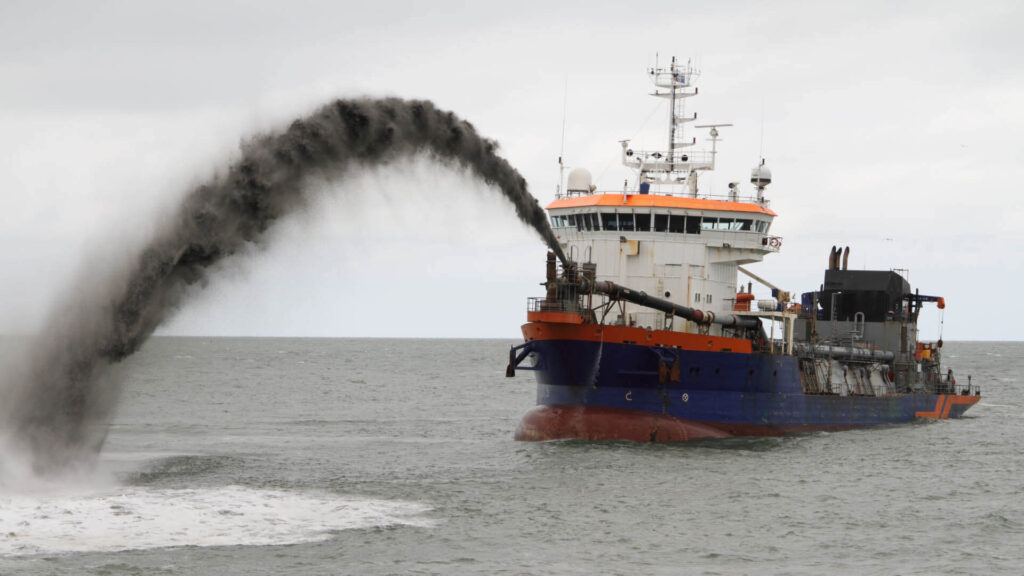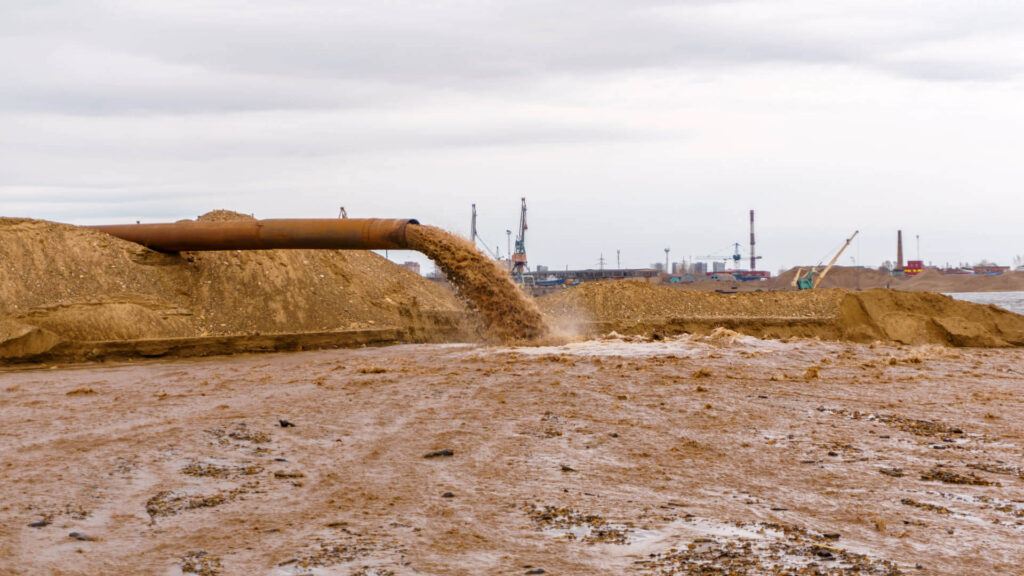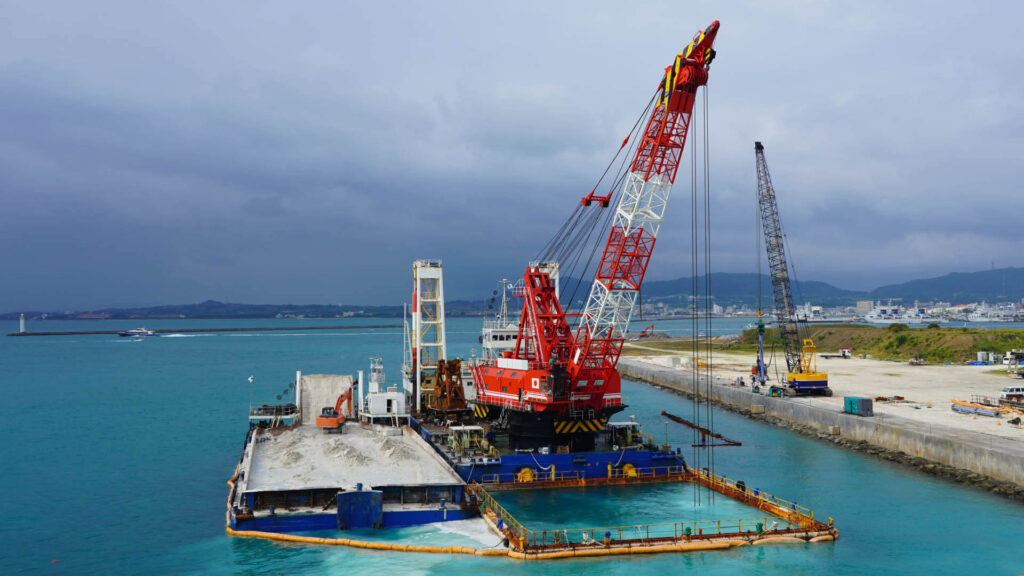Hydraulic dredging is a highly efficient method for removing and transporting sediment in various marine and industrial applications. This technique utilizes powerful suction to extract materials such as sand, silt, and sludge from riverbeds, harbors, and mining sites, ensuring navigability and environmental restoration. The effectiveness of hydraulic dredging depends largely on the performance of the hydraulic dredge and its components.
At the core of these operations is the hydraulic dredge pump, which facilitates the movement of sediment-laden water through pipelines to designated disposal or processing sites. Advanced pumping techniques, including optimized impeller designs and variable frequency drives, help improve flow dynamics, reduce energy consumption, and enhance overall efficiency. Proper management of slurry flow, pump selection, and real-time monitoring play a crucial role in maximizing output while minimizing wear and operational costs. By leveraging these innovations, dredging operations can achieve higher productivity, reduced downtime, and improved sustainability.
Understanding Hydraulic Dredging Fundamentals
Hydraulic dredging is a sediment removal process that relies on high-powered suction to extract and transport materials through pipelines. This method is widely used for maintaining waterways, mining operations, and land reclamation due to its ability to move large volumes of material efficiently. By utilizing water as a transport medium, hydraulic dredging minimizes manual handling and allows for continuous material flow over long distances.
A hydraulic dredge consists of several key components that work together to optimize performance. The hydraulic dredge pump generates the necessary suction force to lift sediment-laden water through the suction pipeline. The cutter head, when present, helps loosen compacted materials, while booster pumps are sometimes used to extend the dredging range by maintaining pressure in the discharge pipeline.
When comparing hydraulic dredging to mechanical dredging, the primary distinction lies in their operational methods. Mechanical dredging relies on heavy equipment such as clamshell buckets and excavators to physically scoop material, which can be less efficient for large-scale sediment transport. Hydraulic dredging, on the other hand, excels in environments requiring continuous material movement, making it ideal for dredging rivers, lakes, and coastal areas. Its efficiency and ability to minimize environmental disturbance make it a preferred choice for many dredging applications.
The Role of Hydraulic Dredge Pumps in Dredging Operations

A hydraulic dredge pump plays a critical role in sediment transportation by creating suction to lift and move slurry through pipelines. This pump generates the necessary pressure to transport a mixture of water and solid materials over long distances, making it a key component in hydraulic dredging. Efficient operation of the pump ensures continuous material flow, reducing downtime and increasing overall project productivity.
Selecting the right pump is essential for optimizing performance in hydraulic dredging. Centrifugal pumps are the most common choice due to their ability to handle high flow rates and large volumes of sediment. Submersible pumps, on the other hand, are often used in specialized applications where direct placement in the dredging area is required. The choice between these options depends on factors such as dredging depth, material type, and pipeline distance.
Despite their efficiency, hydraulic dredge pumps face performance challenges, including cavitation, clogging, and wear. Cavitation occurs when vapor bubbles form due to low pressure, potentially damaging the pump. Clogging is another common issue, especially in debris-laden environments. Proper pump selection, routine maintenance, and advanced impeller designs help mitigate these challenges and improve long-term efficiency in dredging operations.
Advanced Pumping Techniques for Hydraulic Dredging Efficiency
Maximizing efficiency in hydraulic dredging requires advanced pumping techniques that optimize performance while reducing operational costs. One of the most effective ways to achieve this is by adjusting pump speed and pressure to match the specific dredging conditions. By fine-tuning these parameters, operators can maintain a steady slurry flow, prevent cavitation, and minimize energy consumption, leading to improved productivity.
The integration of Variable Frequency Drives (VFDs) further enhances hydraulic dredging efficiency by providing real-time control over pump speed. VFDs allow operators to adjust the power output of the hydraulic dredge pump based on sediment density and distance, ensuring consistent material transport without excessive energy use. This level of automation helps prevent pump strain and extends equipment lifespan.
For large-scale projects, booster pumps are often employed to maintain optimal flow rates and extend the dredging range. Additionally, selecting the right impeller and liner materials plays a crucial role in reducing the hydraulic dredge pump’s wear and tear. High-chrome alloys and rubber-lined casings help withstand abrasive materials, improving longevity. By implementing these advanced pumping techniques, dredging operations can achieve higher efficiency, reduced maintenance costs, and extended equipment lifespans.
Flow Dynamics and Slurry Management in Hydraulic Dredging

Effective slurry management is essential for optimizing hydraulic dredging efficiency. The composition of the slurry, including density, viscosity, and the solid-liquid ratio, directly impacts pump performance and overall project success. Higher sediment concentrations improve efficiency but can also increase equipment wear. Maintaining the right balance ensures smooth material transport while reducing strain on the hydraulic dredge pump.
Pipeline design plays a crucial role in hydraulic dredging operations. Factors such as pipeline diameter, material, and layout affect flow resistance and energy consumption. A well-designed system minimizes friction loss, ensuring that the hydraulic dredge pump operates at peak efficiency. Properly placed bends, reducers, and pipeline lengths help maintain consistent flow while preventing blockages.
Reducing turbulence is another key factor in optimizing dredging performance. Smooth flow dynamics decrease energy loss and prevent excessive wear on pump components. Implementing gradual pipeline transitions and using flow-enhancing techniques such as slurry conditioners can improve efficiency.
Monitoring and adjusting flow rates in real-time ensures stable dredging operations. Using flow meters and pressure sensors helps operators make data-driven adjustments, maximizing hydraulic dredging performance while minimizing downtime and maintenance costs. By optimizing flow dynamics, dredging operations can achieve greater efficiency and extended equipment lifespan.
Automation and Real-Time Monitoring for Efficiency Gains
Advancements in automation and real-time monitoring have significantly improved hydraulic dredging efficiency by optimizing performance and reducing operational costs. Sensor technology and IoT integration allow for continuous tracking of dredging parameters, ensuring that operations run smoothly and effectively. Smart sensors measure critical data such as sediment concentration, pump pressure, and flow rate, helping operators make adjustments in real-time to maximize dredging output. These innovations enhance efficiency while preventing unnecessary wear on the hydraulic dredge pump.
GPS-guided dredging further improves precision by enabling operators to maintain accurate positioning during excavation. This level of control reduces over-dredging, minimizes fuel consumption, and ensures compliance with project specifications. With GPS technology, hydraulic dredging operations can achieve higher productivity while reducing environmental impact.
Data-driven decision-making is crucial for optimizing performance. Flow meters, pressure sensors, and dredge monitoring software provide real-time insights, allowing operators to address potential issues proactively. By continuously analyzing performance metrics, dredging teams can extend the lifespan of the hydraulic dredge pump, improve fuel efficiency, and reduce downtime. Implementing automation in hydraulic dredging ensures higher operational efficiency, cost savings, and increased project reliability.
Environmental and Regulatory Considerations in Hydraulic Dredging

Hydraulic dredging is crucial for maintaining waterways, but it must be conducted responsibly to minimize environmental impact. One major concern is turbidity and sediment resuspension, which can affect water quality and marine ecosystems. To mitigate this, operators use silt curtains, precise dredging controls, and real-time monitoring to limit the spread of suspended particles. Optimizing the hydraulic dredge pump operation ensures efficient material removal while reducing unnecessary disturbance to aquatic habitats.
Compliance with local and international dredging regulations is essential for project approval and environmental sustainability. Regulatory bodies set strict guidelines regarding sediment disposal, water quality standards, and protected areas. Adhering to these requirements ensures responsible hydraulic dredging while avoiding legal and financial penalties. Implementing best practices, such as environmental impact assessments and stakeholder consultations, further supports regulatory compliance.
Sustainable dredging techniques help reduce operations’ overall environmental footprint. Energy-efficient hydraulic dredge pump systems, eco-friendly discharge methods, and sediment reuse strategies minimize waste and conserve natural resources. By integrating environmentally responsible practices, hydraulic dredging operations can achieve long-term efficiency while protecting marine and coastal ecosystems for future generations.
Future Innovations in Hydraulic Dredging Technology

The future of hydraulic dredging is being shaped by technological advancements that improve efficiency, reduce operational costs, and extend equipment lifespan. One of the most significant innovations is the development of high-efficiency hydraulic dredge pumps. These modern pumps are designed with optimized impellers, improved suction capabilities, and energy-efficient motors that maximize sediment transport while reducing fuel consumption. By increasing pump efficiency, dredging operations can achieve higher productivity with lower environmental impact.
Emerging materials are also critical to enhancing hydraulic dredge pump durability. Wear-resistant alloys, ceramic coatings, and composite materials are being integrated into pump components to combat the abrasive nature of dredged materials. These innovations reduce maintenance requirements and extend pump lifespans, making hydraulic dredging more cost-effective over time.
Artificial intelligence (AI) and automation are revolutionizing dredging operations by enabling predictive maintenance and real-time performance monitoring. AI-powered systems analyze sensor data to detect potential pump failures before they occur, allowing for proactive maintenance that minimizes downtime. Additionally, automation technologies, including GPS-guided dredging and remote-controlled dredge units, enhance precision and reduce labor costs.
As the industry continues to evolve, these innovations will make hydraulic dredging more efficient, environmentally sustainable, and technologically advanced, ensuring long-term success in sediment management and waterway maintenance.
Conclusion
Optimizing hydraulic dredging efficiency requires a combination of advanced pumping techniques, proper flow management, and real-time monitoring. By fine-tuning pump speed and pressure, integrating automation, and improving slurry management, dredging operations can achieve higher productivity while reducing energy consumption and equipment wear. Booster pumps, Variable Frequency Drives (VFDs), and optimized impeller designs further enhance performance, ensuring smooth and efficient material transport.
Continuous innovation in hydraulic dredge pump technology is essential for meeting the demands of modern dredging projects. Advancements in pump materials, wear-resistant components, and AI-powered predictive maintenance help extend equipment lifespan and minimize operational costs. These improvements make hydraulic dredging more reliable, cost-effective, and environmentally sustainable.
Dredging operators are encouraged to adopt cutting-edge pumping techniques and improved flow dynamics strategies. Implementing real-time data monitoring and automation allows for better decision-making and increased operational efficiency. By embracing the latest developments in hydraulic dredging, operators can enhance their project outcomes while minimizing environmental impact. Investing in high-performance hydraulic dredge pump systems and sustainable dredging methods ensures long-term success in sediment management and waterway maintenance.


